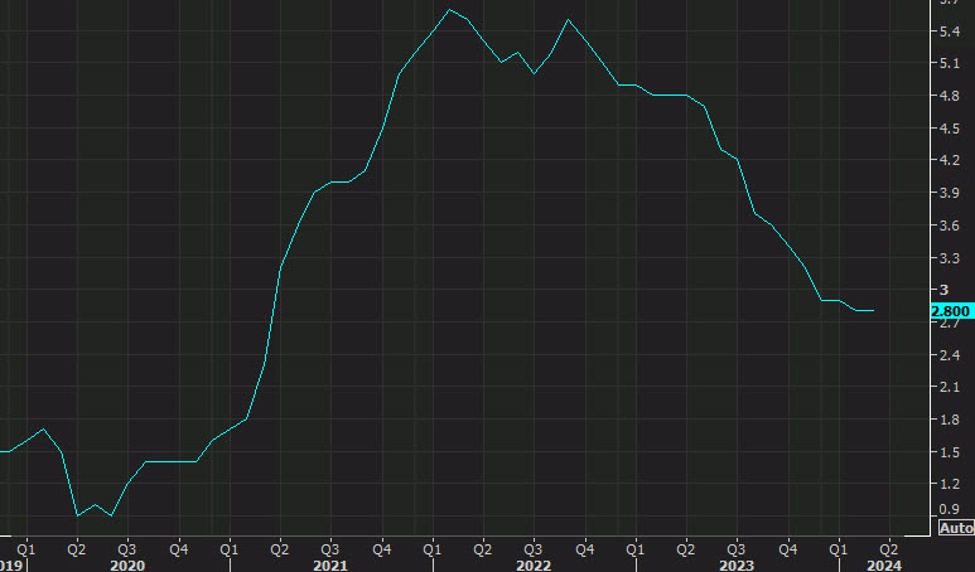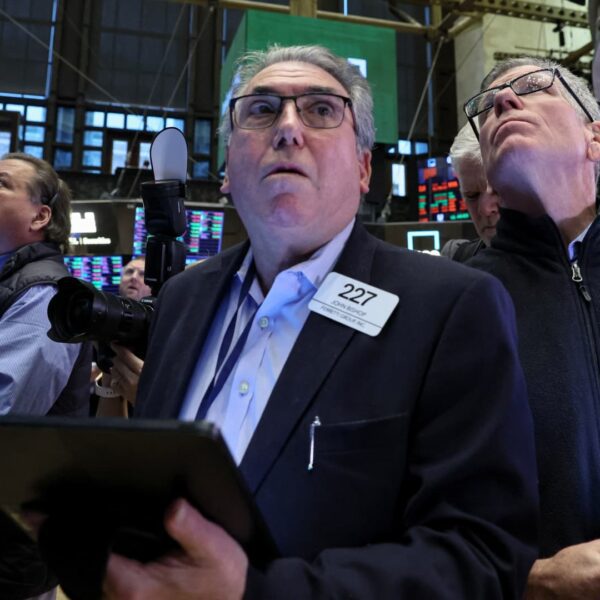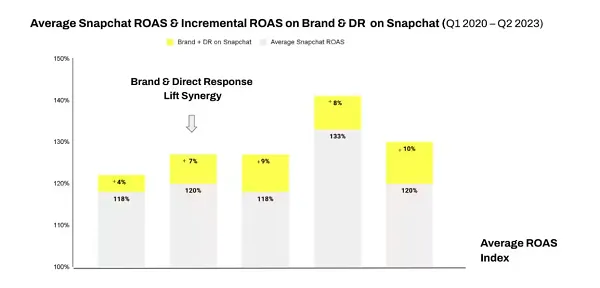Core PCE y/y
Tomorrow we will find out just how nervous financial markets are about inflation.
The key number of the week comes at 8:30 am ET with the release of core PCE. The consensus is +0.3% m/m but it’s on the razor’s edge as all estimates are nearly-evenly split between +0.2% and +0.3% with the average at +0.25%. Take that as downward bias to the headline though many in the market will have already priced it in (or maybe I’m overestimating the market).
Other inflation numbers to watch:
- PCE core year-over-year expected at 2.8%, the same as last month
- PCE expected at 0.3% m/m and 2.7% y/y
The focus is going to be on core and in particularly core services ex-housing but don’t discount the headline number. A reading below 2.7% — and something like 2.5% — starts to look awfully close to target even if lapping some high commodity prices is doing much of the lifting.
Income and spending
The other half of the report focuses on income and spending. The latest round of comments from Fed officials highlighted strong wage growth as a concern. I think that’s a lagging indicator but it’s worth keeping in mind as incomes are expected up 0.3% m/m. Spending is forecast to keep pace with that at +0.3% but I wonder if the US consumer outperforms yet again.
Market moves
This is certainly going to be a market mover and I worry about the stock market if inflation is high. There has been a dry spell for tier-1 data in US markets but I wonder if we don’t see a ‘sell the fact’ trade. What has me worried is that the bond market has faded the entire CPI move, despite a lower reading. If CPI can’t lead to a sustained move, why should a more-dated report?
Now that assumes we don’t get a miss of more than 0.1 pp on the month-over-month core but if it’s +0.2% or +0.3% then the kneejerk may be faded, especially with a full data calendar next week and indications the market is starting to look more at growth data than inflation.
Overall, I don’t see a big bias one way or another for the US dollar so the trade will be digging into the data and quickly crunching and rounding the numbers to see if the headlines match the real story.














